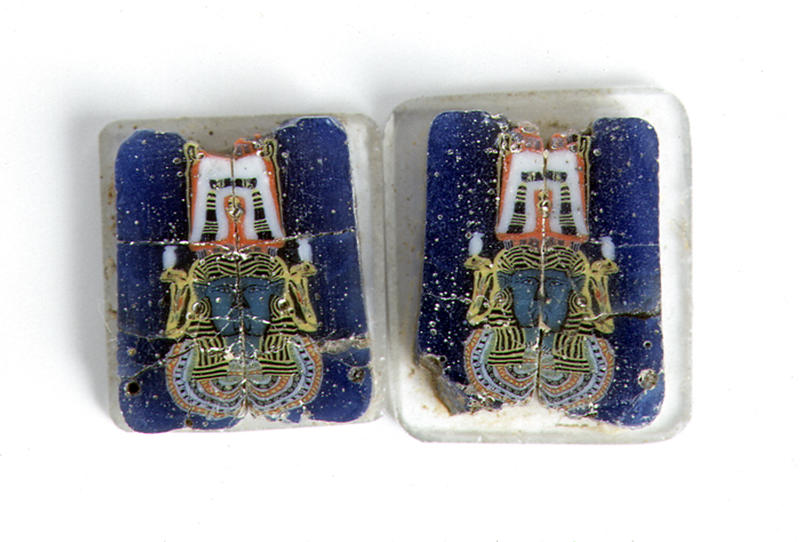ハトホル女神
- エジプト
- 紀元前1-紀元後1世紀
- ガラス
紺色の地に、青緑色の顔をしたハトホル女神が表現される。顔の半分を表したモザイクガラスを切断し、表面と裏面を対称形に貼り合わせて顔を作っている。2点とも同じモザイクガラスが使われている。牛の耳をもつこの女神は、幅広の襟飾りを着け、聖蛇ウラエウスの付いたかつらをかぶり、その上に神殿を載せている。これらの細部は黒色、白色、赤色、青色、緑色で表される。この姿はシストルム(古代エジプトの楽器)や柱の装飾として使われることが多かった。ハトホル女神はホルス神の妻あるいは母といわれ、幸福の女神、愛と美の女神、舞踊の女神など多くの属性を備えていた。
Catalogue Entry
Image of the goddess Hathor with a turquoise face on a cobalt ground. Each unit of mosaic glass shows half of the goddess's face which is then combined in paired front to back arrangements to make a single face image. Both pieces use the same mosaic glass elements. This goddess has ox ears, wears a wide collar ornament, and a wig with the sacred snake uraeus topped by a sacred shrine. These details are shown in black, white, red, blue and green. This form was widely used on the sistrum (a musical instrument of ancient Egypt) or as decoration on pillars. The goddess Hathor was said to be either the wife or mother of the god Horus and she was worshiped as the goddess of happiness, the goddess of love and beauty, and the goddess of dance.
